| Date | Text | |
|---|---|---|
22 Jun 1633

Galileo Galilei |
Galileo Galilei In 1633, Galileo Galilei was forced by the Inquisition to “abjure, curse, and detest” his Copernican heliocentric views. “I, Galileo...do swear that I have always believed, do now believe and, with God's aid shall believe hereafter, all that which is taught and preached by the ... church. I must wholly forsake the false opinion that the sun is the center of the world and moves not, and that the earth is not the center of the world and moves....” He was then condemned to the “formal prison of the Holy Office” for an undetermined amount of time which would be served at the pleasure of his judges, and required to repeat the seven penitential psalms once a week for three years. The next day the Pope specified the prison sentence should be house arrest. |
|
22 Jun 1675

Royal Greenwich Observatory |
Royal Greenwich Observatory In 1675, the Royal Greenwich Observatory was created by Royal Warrant in England by Charles II. Building designed by Sir Christopher Wren (who was also a Professor of Astronomy) was commenced 10 Aug 1675 and finished the following year by John Flamsteed was appointed as the first Astronomer Royal. Its primary uses were in practical astronomy - navigation, timekeeping, determination of star positions. In 1767 the observatory began publishing The Nautical Almanac, which established the longitude of Greenwich as a baseline for time calculations. The almanac's popularity among navigators led in part to the adoption (1884) of the Greenwich meridian as the Earth's prime meridian (0° longitude) and the international time zones. |
|
22 Jun 1744

Johann Christian Polycarp Erxleben |
birth Johann Christian Polycarp Erxleben Johann Christian Polycarp Erxleben, German naturalist (died 1777) |
|
22 Jun 1757

George Vancouver |
birth George Vancouver George Vancouver, English explorer (died 1798) |
|
22 Jun 1792

James Beaumont Neilson |
birth James Beaumont Neilson Born 22 Jun 1792; died 18 Jan 1865 at age 72. Scottish inventor who introduced the use of a hot-air blast instead of a cold-air blast for the smelting of iron. His process reduced the amount of coal needed and increased efficiency to satisfy the demands of the rail and shipbuilding industries. While manager of the Glasgow Gas-works, he had experimented with the effect of heated air on the illuminating power of gas, by bringing up a stream of it in a tube so as to surround the gas burner. He found the combustion of the gas was more intense and brighter. Then, experimenting on a common smith's fire, by blowing the fire with heated air, the effect was the same; the fire was much more brilliant, and accompanied by an unusually intense degree of heat. In 1828, he patented his hot blast method for smelting. |
|
22 Jun 1802
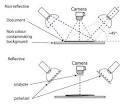
Copying by light |
Copying by light In 1802, “An account of a method of copying paintings upon glass and of making profiles by the agency of light upon nitrate of silver. Invented by T. Wedgwood, Esq.” was published in the Journals of the Royal Institution. Humphry Davy described the process in an article on behalf of Thomas Wedgwood (son of the famous English potter) who was working with Davy in the basement laboratory of the Royal Institution. Although they saw this chemical means could create images, neither Wedgwood nor Davy were able to permanently fix the images. Although this is cited as a precursor of photographic processes, Davy did not pursue it, and several decades passed before the more successful results achieved by Louis Daguerre and Henry Fox Talbot. |
|
22 Jun 1812

Richard Kirwan |
death Richard Kirwan Richard Kirwan, Irish scientist (born 1733) |
|
22 Jun 1832

Pin making machine |
Pin making machine In 1832, a pin manufacturing machine was patented by John Ireland Howe (U.S. No. 2013). During the 19th century the American pin industry concentrated in the Naugatuck River Valley because Howe (1793-1876) built a plant in Derby, Connecticut, to make pins with the machine he invented to shape pins in one operation instead of the 18 separate steps required for hand production. He turned for mechanical help to Robert Hoe (who built printing presses.) His first working model of a machine that would make pins, though imperfect, was exhibited that year at the American Institute Fair in New York, where Howe received a silver medal. He improved the machine during the winter of 1832-33. Howe also invented a machine to stick the pins in paper packets. |
|
22 Jun 1841
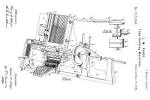
Typesetting machine patent |
Typesetting machine patent In 1841, the first U.S. patent for a typesetting machine was issued to Frenchman Adrien Delcambre and Englishman James Hadden Young, both residing in Lisle, France (No.2,139). Their "Pianotyp" placed letters side by side in their proper places "by means of ... inclined planes upon which the types are thrown and allowed to descend by various channels meeting at one point to what we call the composing box." The machine was operated using "a number of keys similar to those of a pianoforte which act as levers which push the types [which fall] by their own gravity to the said box whenever the keys are depressed." It was patented in England* on 13 Mar 1840, and used in London (1841) to set The Phalanx weekly magazine*. |
|
22 Jun 1848
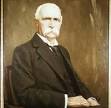
William Macewen |
birth William Macewen William Macewen (died 1924), Scottish surgeon. |
|
22 Jun 1851

Thomas Edmondson |
death Thomas Edmondson Died 22 Jun 1851 at age 58 (born 30 Jun 1792). English inventor whose ticket printing and numbering machine pioneered a system of fare collection in the development of the railways. While working for the Newcastle and Carlisle Railway, he found handwriting the tickets irksome and delaying, and it occurred to him that the work could be done by a machine. He evolved a process for preparing receipts in advance, serial numbering all the tickets (for accountability of monies collected), and inventing a basic stamping system on wooden blocks. Edmondson's early wooden dating presses were developed into iron ones and mass produced. By 1843, twenty-seven English companies, and the Paris and Rouen railway were using the system, which had now become the standard one to adopt. |
|
22 Jun 1864
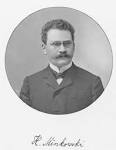
Hermann Minkowski |
birth Hermann Minkowski Born 22 Jun 1864; died 12 Jan 1909 at age 44. quotes German mathematician who developed the geometrical theory of numbers and who used geometrical methods to solve difficult problems in number theory, mathematical physics, and the theory of relativity. By 1907, Minkowski realised that the work of Lorentz and Einstein could be best understood in a non-euclidean space. He considered space and time, which were formerly thought to be independent, to be coupled together in a four-dimensional "space-time continuum". Minkowski worked out a four-dimensional treatment of electrodynamics. His idea of a four-dimensional space (since known as "Minkowski space"), combining the three dimensions of physical space with that of time, laid the mathematical foundation of Albert Einstein's general theory of relativity. |
|
22 Jun 1871

William McDougall |
birth William McDougall Born 22 Jun 1871; died 28 Nov 1938 at age 67. quotes British-born U.S. psychologist influential in establishing experimental and physiological psychology. As one of the foremost psychologists of all English-speaking countries, he did much to stimulate widespread study of the basis of social behaviour. He contributed significantly to more branches and departments of psychology than anyone else writing in English. He was the exponent of hormic psychology, the central idea being that there is an end or purpose which goads us to action, without any real knowledge of its nature, and often without benefit or even thought of pleasure. Human progress can only be determined in terms of "horme" or "drive". He theorized that human behavior is determined by both instinctive and intentional strivings. |
|
22 Jun 1873
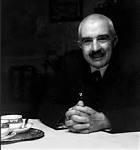
Filippo Silvestri |
birth Filippo Silvestri Born 22 Jun 1873; died 10 Jun 1949 at age 75. Italian entomologist, best remembered for his pioneering work in polyembryony, the development of more than one individual from a single fertilized egg cell. During the late 1930s Silvestri discovered that this type of reproduction occurs in the insect species Litomatix truncatellus. His finding, resulting from a close analysis of the reproductive stages, cell division, and egg structure of these parasitic hymenopterans, attracted the attention of many biologists because of its implications for the nature of the egg and the causes of multiple generation. He also studied the morphology and biology of the Termitidae, the most highly evolved family of termites. He also made a comparative study of the form and structure of the millipede and the centipede. |
|
22 Jun 1875

Sir William Edmond Logan |
death Sir William Edmond Logan Died 22 Jun 1875 at age 77 (born 20 Apr 1798). Canadian geologist, known as the “Father of Canadian Geology.” While working in Wales at his uncle's coal and copper-smelting business, he made geologic maps of coalfields in Wales, pursuing a desire to understand the sources of coal and ores. He noted the relationship between the underlying clay layers and fossil tree roots with local coal beds. This substantiated the theory that coal beds are formed in place. When he founded the Geological Survey of Canada, the country's geology was virtually unknown. He served as its director (1842-69) and produced the monumental Report on the Geology of Canada (1863), recording 20 years of his research, fieldwork, mapping, reports, and examation of fossil and mineral specimens. He was knighted by Queen Victoria. Canada's highest mountain is named for him. |
|
22 Jun 1878

Adolf Erik Nordenskiöld |
Adolf Erik Nordenskiöld (exploration) Adolf Erik Nordenskiöld sets out on the year-long first navigation of the Northern Sea Route, the shipping lane from the Atlantic Ocean to the Pacific Ocean along the Siberian coast. |
|
22 Jun 1887

Sir Julian Huxley |
birth Sir Julian Huxley Born 22 Jun 1887; died 14 Feb 1975 at age 87. quotes Julian Sorell Huxley was an English biologist and writer, philosopher, and educator who greatly influenced the modern development of embryology, systematics, and studies of behaviour and evolution. He studied the differential growth of different body parts, Problems of Relative Growth (1932). He wrote many popular articles and essays, especially on ornithology and evolution, and co-produced several history films, including the Private Life of the Gannet (1934). No stranger to controversy, Huxley supported the contentious view that the human race could benefit from planned parenthood using artificial insemination by donors of “superior characteristics.” (He was the grandson of biologist Thomas H. Huxley and brother of Aldous Huxley.) |
|
22 Jun 1887
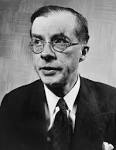
Julian Huxley |
birth Julian Huxley Julian Huxley (died 1975), English biologist and populariser of science. |
|
22 Jun 1891

Franz Alexander |
birth Franz Alexander Born 22 Jun 1891; died 8 Mar 1964 at age 72. Franz Gabriel Alexander was a Hungarian-American physician and psychoanalyst sometimes called the “father of psychosomatic medicine” because he was a leader in identifying emotional tension as a significant cause of physical illness. |
|
22 Jun 1892

N. Howell Furman |
birth N. Howell Furman Born 22 Jun 1892; died 2 Aug 1965 at age 73. American analytical chemist whose analytical separation of uranium contributed to the development of the atomic bomb. He developed special techniques for preparing the bomb project materials, notably the sampling and analysis necessary for producing pure uranium metal. He also devised a new method of estimating traces of metals in various substances and assisted in developing an ether extraction process for the preparation of uranium oxide of the extreme purity required. His special methods also made possible greater utilization of tracer techniques with radioactive and stable isotopes. |
|
22 Jun 1897

Norbert Elias |
birth Norbert Elias Born 22 Jun 1897; died 1 Aug 1990 at age 93. quotes German sociologist. |
|
22 Jun 1906

Fritz Schaudinn |
death Fritz Schaudinn Died 22 Jun 1906 at age 34 (born 19 Sep 1871). Fritz Richard Schaudinn was a German zoologist and microbiologist who, with dermatologist Erich Hoffmann, discovered (1905) the spirochaete which causes syphilis, Spirochaeta pallida, now known as Treponema pallidum. Schaudinn determined the amoebic nature of tropical dysentery, worked on trypanosomes (flagellated protozoans which include the causal agent of African sleeping sickness, an infection of the bloodstream) and researched malaria. He also demonstrated that human hookworm infection is contracted through the skin of the feet. He made important contributions to zoology and helped develop protozoology as an experimental science. He also discovered the alternation of generations in Foraminifera and Coccidae. |
|
22 Jun 1910

Richard Wetherill |
death Richard Wetherill Died 22 Jun 1910 at age 52 (born 12 Jun 1858). explorer and archaeologist who discovered the Cliff Palace, Mesa Verde, ruins on 18 Dec 1888 near Mancos, Colorado. He subsequently was involved in its excavation, and became perhaps the most influential amateur archaeologist of the late 19th century. Wetherill was a rancher searching for missing cattle when he came upon the Cliff Palace, which is now preserved in the Mesa Verde National Park. He also discovered the Spruce Tree House. After 14 years exploring the archaeology of the region, he was instrumental in the establishment of Chaco Canyon National Monument. He died by murder, shot following a dispute over the theft of horse. |
|
22 Jun 1910

Konrad Zuse |
birth Konrad Zuse Born 22 Jun 1910; died 18 Dec 1995 at age 85. German engineer who in 1941 constructed the first fully operational program-controlled electromechanical binary calculating machine, or digital computer, called the Z3. Earlier, Zuse developed and built the Z1 the first binary digital computer in the world (1936-8) and two more machines before the end of WW II, but he was unable to convince the Nazi government to support his work. He created a basic programming system known as Plankalkül with which he designed a chess playing program.The Z3 was destroyed in 1944 during the war. Next came the more sophisticated Z4, which was the only Zuse Z-machine to survive the war, by several moves to new locations away from air raids. During the last days of war it was hidden. In 1950, he took it to Zurich. |
|
22 Jun 1919

Henri Tajfel |
birth Henri Tajfel Henri Tajfel (died 1982), Polish-born social psychologist. |
|
22 Jun 1920

James H. Pomerene |
birth James H. Pomerene Born 22 Jun 1920; died 7 Dec 2008 at age 88. James Herbert Pomerene was an American computer designer who, inApr 1946, joined John von Neumann and Herman Goldstine in their newly organized Electronic Computer Project at the Institute for Advanced Study in Princeton, New Jersey. This project was to build a parallel stored-program computer. He designed the adder portion of the arithmetic unit and then was entirely responsible for the development and construction of the electrostatic (Williams tube) memory and became the chief engineer of the project 1951-56. Then he joined IBM to assist development of the HARVEST computer, a special system built for the National Security Agency. It had two levels of program control and also had a tape and tape library system that was fully automatic and of great capacity. |
|
22 Jun 1925
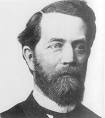
Felix Klein |
death Felix Klein Felix Klein (born 1849), German mathematician. |
|
22 Jun 1930
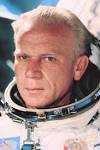
Yuri Artyukhin |
birth Yuri Artyukhin Yuri Artyukhin (died 1998), cosmonaut. |
|
22 Jun 1932

Bernhard Lauritz Frederik Bang |
death Bernhard Lauritz Frederik Bang Died 22 Jun 1932 at age 84 (born 7 Jun 1848). Danish veterinarian who in 1897 discovered Brucella abortus (Bang's bacillus), the causative agent of contagious abortion in cattle and of brucellosis (undulant fever) in human beings. Bang's teaching, with the introduction of antiseptics, represented a watershed in veterinary surgery. Although long recognized in human medicine, antiseptics had been met with little attention by veterinaries. Bang was instrumental in showing that tuberculosis could be transmitted by cow's milk and in developing isolation techniques. He was the first to use tuberculin, discovered by Robert Koch in 1890, on cattle. He used it diagnostically, rather than therapeutically, as a means for liberating livestock of tuberculosis and to create clean breeding centres. |
|
22 Jun 1937
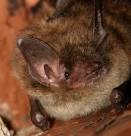
Little brown bat |
Little brown bat In 1937, a certain female little brown bat in Mashpee, Mass., was banded by researchers. The same bat was found two decades later, on 30 Apr 1960, in a cave on Mt. Aeolis, Vermont. It was identified from the band as 24 years old - the oldest known U.S. bat. The little brown bat (Myotis lucifugus) has a wing span of 222-269 mm with glossy fur on its back and paler underside colours ranging from pale tan to dark brown. The species is the most abundant bat in the U.S., found throughout forests of North America and Alaska, in tree or cliff cavities, caves, mines and attics. On 25 Aug 1999, a newspaper reported a 33-yr-old wild bat in Switzerland. On 20 Jun 2005, a journal received an article identifying a 41-yr-old bat in Siberia. |
|
22 Jun 1940
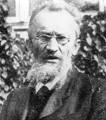
Wladimir Köppen |
death Wladimir Köppen Died 22 Jun 1940 at age 93 (born 25 Sep 1846). Wladimir (Peter) Köppen was a German meteorologist and climatologist best known for his delineation and mapping of the climatic regions of the world. He played a major role in the advancement of climatology and meteorology for more than 70 years. The climate classification system he developed remains popular because it uses easily obtained data (monthly mean temperatures and precipitation) and straightforward, objective criteria. He recognized five principal climate groups: (A) Humid tropical -winterless climates; (B) Dry - evaporation constantly exceed precipitation; (C) humid mid-latitude, mild winters; (D) humid mid-latitude, severe winters; and (E) Polar - summerless climates. |
|
22 Jun 1940

Daniel Quillen |
birth Daniel Quillen Daniel Quillen (died 2011), American mathematician. |
|
22 Jun 1946

Jet airmail |
Jet airmail In 1946, jet airplanes were used to transport mail for the first time |
|
22 Jun 1954

Karl Taylor Compton |
death Karl Taylor Compton Died 22 Jun 1954 at age 66 (born 14 Sep 1887). American educator and physicist who directed development of radar during WW II. His research included the passage of photoelectrons through metals, ionization and the motion of electrons in gases, fluorescence, the theory of the electric arc, and collisions of electrons and atoms. In 1933, President Roosevelt asked him to chair the new Scientific Advisory Board. When the National Defense Research Committee was formed in 1940, he was chief of Division D (detection: radar, fire control, etc.) In 1941, he was in charge of those divisions concerned with radar within the new Office of Scientific Research and Development (OSRD). Afterwards he was cited for personally shortening the duration of the war. He was the first recipient William Procter Prize for Scientific Achievement, and brother of Arthur H. Compton. |
|
22 Jun 1969

Cuyahoga River fire |
Cuyahoga River fire In 1969, in America, oil-sodden floating debris on the Cuyahoga River ignited (perhaps by sparks from a passing train) and burned with flames reported up to five stories high. Although fire-fighters extinguished the blaze in a half-hour or so, it caused $50,000 in damage. For a century the Cleveland, Ohio river had been an open sewer for industrial waste, through the times when factory production seemed more important than worrying about the environment. Several fires had happened in the prior hundred years, but attitudes changed to outrage as this time, national attention was aroused. It became one of several disasters that led to the Clean Water Act and the Environmental Protection Agency (EPA). Determined remedial action for decades since has resulted in cleaner water, and improving aquatic life. |
|
22 Jun 1973

First Skylab crew returns |
First Skylab crew returns In 1973, the first Skylab crew of astronauts splashed down safely after a then record 28 days in space. The Skylab was a manned, orbiting spacecraft composed of five parts: the Apollo telescope mount was a solar observatory, the multiple docking adapter, the airlock module, the instrument unit, and the orbital workshop. The Skylab itself was launched on 14 May 1973. It was first manned during the period 25 May to 22 Jun 1973, by the crew of the SL-2 mission. Next, it was manned during the period Jul 28 to 5 Sep 1973 and the final manned period was from 16 Nov 1973 - 8 Feb 1974. The crew quarters contained provisions and supplies necessary to support three-person crews for periods of up to 84 days each. |
|
22 Jun 1978
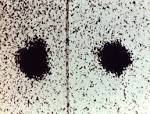
Charon discovered |
Charon discovered In 1978, evidence of the first moon of Pluto was discovered by astronomer James W. Christy of the Naval Observatory in Flagstaff, Ariz. when he obtained a photograph of Pluto that showed the orb to be distinctly elongated.. Furthermore, the elongations appeared to change position with respect to the stars over time. After eliminating the possibility that the elongations were produced by plate defects and background stars, the only plausible explanation was that they were caused by a previously unknown moon orbiting Pluto at a distance of about 19,600 kilometers (12,100 miles) with a period of 6.4 days. The moon was named Charon, after the boatman in Greek mythology who took the souls of the dead across the River Styx to Pluto's underworld. |
|
22 Jun 1983
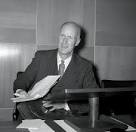
Sir Christopher Hinton |
death Sir Christopher Hinton Died 22 Jun 1983 at age 82 (born 12 May 1901). (Baron of Bankside) English engineer who was a leading figure in the development of the nuclear energy industry in Britain; he supervised the construction of Calder Hall, the world's first large-scale nuclear power station (opened in 1956). He first worked for Imperial Chemical Industries (ICI) where at age 29 he was appointed chief engineer of the Alkali Groups. While at ICI he was selected to start building nuclear power plants. Britain's first four such plants were completed in six years. He played a founding role in fast breeder technology. The decision to build the Dounreay Fast Reactor was made in 1954, which ran successfully for over two decades, until its planned shutdown in 1977, thus demonstrating the safe operation of the concept. |
|
22 Jun 1990

Ilya Mikhaylovich Frank |
death Ilya Mikhaylovich Frank Died 22 Jun 1990 at age 81 (born 23 Oct 1908). Russian physicist who, with Igor Y. Tamm, theoretically explained the mechanism of Cherenkov radiation. In 1934, Cherenkov discovered that a peculiar blue light is emitted by charged particles traveling at very high speeds through water. Frank and Tamm provided the theoretical explanation of this effect, which occurs when the particles travel through an optically transparent medium at speeds greater than the speed of light in that medium. This discovery resulted in the development of new methods for detecting and measuring the velocity of high-speed particles and became of great importance for research in nuclear physics. For this, Frank received the Nobel Prize for Physics in 1958 (jointly with Pavel A. Cherenkov and Igor Y. Tamm). |
|
22 Jun 1999

Brain signals control robot |
Brain signals control robot In 1999, the first demonstration of brain signals from live rat directly controlling a robot arm was published by Nature Neuroscience. The research was hailed as a breakthrough by other scientists working to combine computing with biology. Researchers from MCP Hahnemann University medical school and Duke University taught laboratory rats to operate a water-dispensing robot by thought alone. Their aim is to restore movement to patients who are paralyzed or have had limbs amputated. At first, the robot was controlled by the rat pressing a lever and researchers identified the corresponding brain activity. Then the robot was linked to a computer interpreting the rats' brain signals. The rats gained water merely by thinking about pawing the lever. |
|
22 Jun 2004

Life expectancy for smokers |
Life expectancy for smokers In 2004, a study led by Richard Doll was published in the British Medical Journal, the first research that quantified the damage over the lifetime of a generation, based on a 50-year study of a group of almost 35,000 British doctors who smoked. The study found that almost half of persistent cigarette smokers were killed by their habit, and a quarter died before age 70. Further, those who quit by age 30 had the same life expectancy as a nonsmoker. Even quitting at age 50 saved six more years of life over those who continued smoking. At age 80, 65% of non-smokers were still alive, but only 32% of smokers. Fifty years before, Doll published in the same journal the first report of a study that linked cigarette smoking to lung cancer. |
|
22 Jun 2004

Thomas Gold |
death Thomas Gold Died 22 Jun 2004 at age 84 (born 22 May 1920). quotes Austrian-British-American astronomer known for a steady-state theory of the universe, explaining pulsars, and naming the magnetosphere. In 1948, as a graduate student at Cambridge, he (together with Hermann Bondi and Fred Hoyle) proposed that, a continuous creation of matter in space is gradually forming new galaxies, maintaining the average number of galaxies in any part of the universe, despite its expansion. This is not accepted, as there is more evidence for the Big Bang theory. In 1967, Gold presented his theory on the nature of pulsars (objects in deep space that produce regularly pulsing radio waves). He suggested that they were rotating neutron stars - tiny, extraordinarily massive stars - which emit waves as they spin. |
|
22 Jun 2015

Donald Featherstone |
death Donald Featherstone Died 22 Jun 2015 at age 79 (born 25 Jan 1936). American artist who designed the original plastic pink flamingo lawn ornament, at age 21, having just graduated from Worcester Art Museum School. His first project was a plastic lawn duck for the plastic products manufacturer, Union Products of Leominster, Massachussetts (founded 1946). His second was the flamingo, originated in Sep 1957. He first fashioned it out of clay, based on photos in the National Geographic magazine. They were manufactured by the millions for nearly a half-century, but in 2006, Union Products ceased production, ending business, bankrupt. The rights to the flamingo design and the molds were bought by HMC International LLC which subcontracted Cado Manufacturing to make them. Featherstone designed over 750 different items before he retired from Union Products in 2000. |